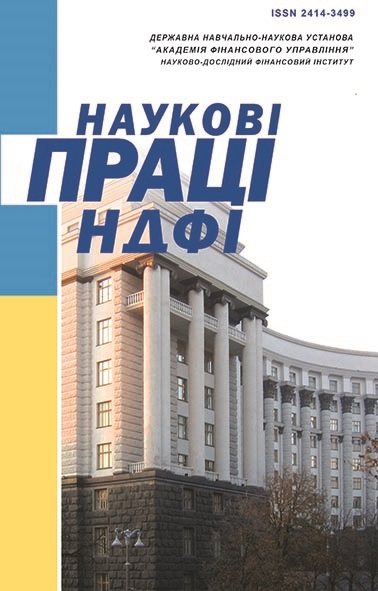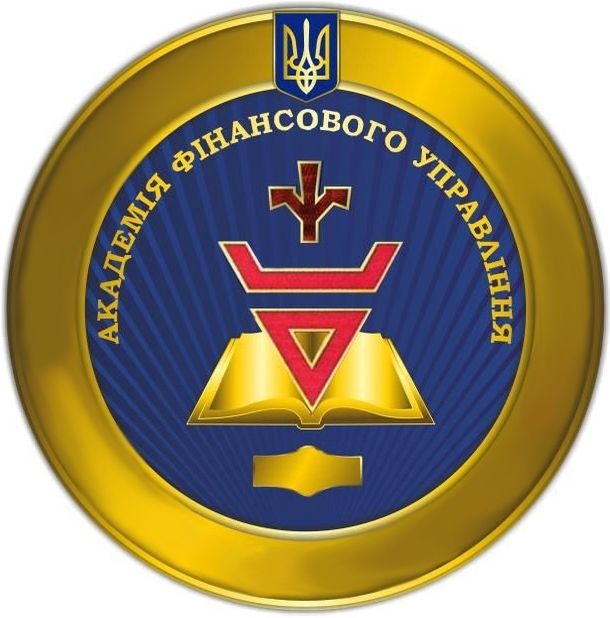
|
№ 4/2022
2. Castells, M. (2007). Internet galaxy. Considerations regarding the Internet, business and society. Kyiv: Vakler [in Ukrainian]. 3. Soros, G. (2018). Open society. Reforming global capitalism. Kharkiv: Folio [in Ukrainian]. 4. Soros, G. (2015). The European Union: disintegration or revival? Kyiv: Dukh i litera [in Ukrainian]. 5. Soros, G. (2002). George Soros on globalization. Kyiv: Osnovy [in Ukrainian]. 6. Soros, G. (1999). The crisis of global capitalism. The open society is under threat. Kyiv: Osnovy [in Ukrainian]. 7. Stiglitz, J. E. (2010). Freefall: America, Free Markets, and the Sinking of the World Economy. New York: W. W. Norton & Company. 8. Stiglitz, J. E. (2002). Globalization and Its Discontents. New York: W.W. Norton. 9. Adamovska, V. S. (2017). Government regulation mechanism of economy and selection directly economic policy in the current economic conditions. Derzhavne upravlinnya: udoskonalennya ta rozvytok, 4. Retrieved from www.dy.nayka.com.ua/?op=1&z=1063 [in Ukrainian]. 10. Boliubash, Ye. (2020). State regulation of socio-economic development of territories: retrospective and modern context. Herald of Khmelnytskyi national university. Economic sciences, 6, 101–105 [in Ukrainian]. doi.org/10.31891/2307-5740-2020-288-6-15 11. Dykha, M. V. (2016). Economic mechanism toolkit for state regulation of socioeconomic processes. Actual Problems of Economics, 5 (179), 20–29. Retrieved from elar.khmnu.edu.ua/jspui/bitstream/123456789/5395/1/20-29.pdf [in Ukrainian]. 12. Zabarna, E. M., Kozakova, O. M., Zadorozniuk, N. O. et al. (2020). Economic theory: regularities, practice and modernity. Kherson: OLDI-PLUS [in Ukrainian] . 13. Korohodova, O. O., Hlushchenko, Ya. I., & Chernenko, N. O. (2022). State regulation of economy. Kyiv: NTUU “Ihor Sikorsky Kyiv Polytechnic Institute”. Retrieved from ela.kpi.ua/bitstream/123456789/48660/1/Korohodova_Hlushchenko.pdf [in Ukrainian]. 14. Mochernyi, S. V. (2005). Economic theory. Kyiv: Academy [in Ukrainian]. 15. Papaika, O. O. (2018). State regulation of macroeconomic environment: national and international aspects. Black sea economic studies, 33, 11–16. Retrieved from bses.in.ua/journals/2018/33_2018/4.pdf [in Ukrainian]. 16. Senyshyn, O. S., Horyn, M. O., & Kundytskyi, O. O. (2014). State regulation of Economy. Lviv: Ivan Franko Lviv National University. Retrieved from econom.lnu.edu.ua/wp-content/uploads/2016/10/PIDRUCHNYK_DERZHAVNE-REHULYUVANNYA-EKONOMIKY_Senyshyn-Horyn-Kundytskyy.pdf [in Ukrainian]. 17. Biletska, L. V., Biletskyi, O. V., & Savych, V. I. (2009). Economic theory (Political economy. Microeconomics. Macroeconomics). Kyiv: TsUL [in Ukrainian]. 18. Ozhelevskaya, T. (2021). Economics and economic reality of Ukraine: institutional trap. Ekonomika ta derzhava, 8, 98–104 [in Ukrainian]. doi.org/10.32702/2306-6806.2021.8.98 19. Chukho, A. A. (2010). Economic theory, vol. 1. Kyiv: SESE “The Academy of Financial Management”. Retrieved from afu.kiev.ua/getfile.php?page_id=454&num=1 [in Ukrainian]. 20. Buchanan, J. M. (1999). Public Finance in Democratic Process: Fiscal Institutions and Individual Choice (The Collected Works of James M. Buchanan). Liberty Fund. Retrieved from www.amazon.com/Finance-Democratic-Process-Collected-Buchanan/dp/0865972206. 21. Williamson, O. E. (1985).The economic institutions of capitalism: firms, markets, relational contacting. New York. Retrieved from edisciplinas.usp.br/pluginfile.php/4869338/mod_resource/content/2/ETC1.PDF. 22. Keynes, J. M. (2009). Essays in Persuasion. New York: CreateSpace Independent Publishing Platform. Retrieved from www.amazon.com/Essays-Persuasion-John-Maynard-Keynes/dp/1441492267. 23. Laffer, A. (2010). Return to Prosperity: How America Can Regain Its Economic Superpower Status. (1st Ed.). Threshold Editions. Retrieved from www.amazon.com/Return-Prosperity-America-Economic-Superpower/dp/1439159920. 24. Lucas, R. E. Jr. (2004). Lectures on Economic Growth. Harvard University Press. Retrieved from www.amazon.com/Lectures-Economic-Growth-Robert-Lucas/dp/0674016017. 25. Marshall, A. (1997). Principles of Economics (Great Minds) (Revised Ed.). Prometheus. Retrieved from www.amazon.com/Principles-Economics-Great-Alfred-Marshall/dp/1573921408. 26. Pigou, A. (1924). The economics of welfare. Transaction Publishers. Retrieved from oll.libertyfund.org/title/pigou-the-economics-of-welfare. 27. Samuelson, P. A. (1983). Foundations of Economic Analysis, Enlarged Edition (Harvard Economic Studies) (2nd Ed.). Harvard University Press. Retrieved from www.amazon.com/Foundations-Economic-Analysis-Enlarged-Harvard/dp/0674313038. 28. Sargent, T. J. (1983).The Ends of Four Big Inflations. In Hall, R. E. (Ed.). Inflation: Causes and Effects, pp. 41–98. Chicago: University of Chicago Press. Retrieved from www.nber.org/system/files/chapters/c11452/c11452.pdf. 29. Friedman, M. (1989). Quantity Theory of Money. In Eatwell, J., Milgate, M., & Newman, P. (Eds). Money. London: The New Palgrave: Palgrave Macmillan. Ddoi.org/10.1007/978-1-349-19804-7_1 30. Harrod, R. F. (1939). An Essay in Dynamic Theory. The Economic Journal, 49 (193), 14–33. doi.org/10.2307/2225181 31. Hansen, A. H. (1964). Business Cycles and National Income. New York: W. W. Norton & Company. Retrieved from www.amazon.com/Business-Cycles-National-Income-Hansen/dp/0393334015. 32. Boyer, R., Caillé, A., & Favereau, O. (2008, September 9). Towards an Institutionalist Political Economy. Journal du MAUSS. doi.org/10.17323/1726-3247-2008-3-17-24 33. Coase, R. M. (1937). The Nature of the Firm. Economics, 4 (16), 386–405. doi.org/10.1111/j.1468-0335.1937.tb00002.x 34. North, D. C. (1990). Institutions, Institutional Change and Economic Performance (Political Economy of Institutions and Decisions) (2nd Ed.). Cambridge University Press. doi.org/10.1017/CBO9780511808678 35. North, D. C., Wallis, J. J., & Weingast, B. R. (2012). Violence and Social Orders: A Conceptual Framework for Interpreting Recorded Human History (Reprint Ed.). Cambridge University Press. Retrieved from www.amazon.com/Violence-Social-Orders-Conceptual-Interpreting/dp/1107646995. 36. Eucken, W. (2011). The Foundations of Economics: History and Theory in the Analysis of Economic Reality. Springer. Retrieved from www.amazon.com/Foundations-Economics-History-Analysis-Economic/dp/3642773206. 37. Tyler, P. (2017). Impetus. How to help people make the right choice. Kyiv: Nash format [in Ukrainian]. 38. Tanzi, V. (1977). Inflation, Lags in Collection, and the Real Value of Tax Revenue. Staff Papers (International Monetary Fund), 24 (1), 154–167. doi.org/10.2307/3866540 39. Tanzi, V. (2007). Argentina: An Economic Chronicle. How one of the richest countries in the world lost its wealth. Jorge Pinto Books Inc. Retrieved from www.amazon.com/Argentina-Economic-Chronicle-Richest-Countries/dp/0979557607. 40. Bernstein, P. L. (1998). Against the Gods: The Remarkable Story of Risk. Wiley. Retrieved from www.amazon.com/Against-Gods-Remarkable-Story-Risk/dp/0471295639. 41. Iefymenko, T. I., Gasanov, S. S., Korystin, O. Ye. Et al. (2013). Development of the national system of financial monitoring. Kyiv: SESE “The Academy of Financial Management”. Retrieved from afu.kiev.ua/getfile.php?page_id=450&num=13 [in Ukrainian]. 42. Abesinova, O. (2021). Foreign experience in organizing financial monitoring. RFI Scienyific Papers, 4, 94–105 [in Ukrainian]. doi.org/10.33763/npndfi2021.04.094 43. Abesinova, O. (2022). Internal development factors of state financial monitoring in Ukraine. RFI Scienyific Papers, 2, 126–136 [in Ukrainian]. doi.org/10.33763/npndfi2022.02.126 44. Abesinova, O., & Kuzminska, O. (2021). Improvement of regulatory and legal support of financial monitoring in Ukraine. Finance of Ukraine, 7, 108–126 [in Ukrainian]. doi.org/10.33763/finukr2021.07.108 45. Kuzminska, O. (2021). The role of financial monitoring as a mechanism to control threats in the field of economic security of Ukraine. RFI Scienyific Papers, 4, 106–123 [in Ukrainian]. doi.org/10.33763/npndfi2021.04.106 46. Levytska, S., & Osadcha, O. (2021). Harmonization of domestic and international practice for financial monitoring of the primary link of its implementation. Finance of Ukraine, 7, 93–107 [in Ukrainian]. doi.org/10.33763/finukr2021.07.093 47. Lovinska, L. (2022). Development of financial monitoring as a science in the context of European integration of Ukraine. Finance of Ukraine, 11, 49–63 [in Ukrainian]. doi.org/10.33763/finukr2022.11.049 48. Cabinet of Ministers of Ukraine. (2020). Procedure for organization and coordination of work on retraining and advanced training of financial monitoring specialists (Decree No. 777, September 2). Retrieved from zakon.rada.gov.ua/laws/show/777-2020-%D0%BF#Text [in Ukrainian]. 49. President of Ukraine. (2021). Strategy of economic security of Ukraine for the period until 2025 (Decree No. 347/2021, August 11). Retrieved from www.president.gov.ua/documents/3472021-39613 [in Ukrainian]. 50. Cabinet of Ministers of Ukraine. (2021). National economic strategy for the period until 2030 (Decree No. 179, March 3). Retrieved from www.kmu.gov.ua/npas/pro-zatverdzhennya-nacionalnoyi-eko-a179 [in Ukrainian]. 51. Cabinet of Ministers of Ukraine. (2021). The main directions of the development of the system of prevention and countermeasures against the legalization (laundering) of criminal proceeds, the financing of terrorism and the financing of the proliferation of weapons of mass destruction in Ukraine for the period until 2023 and the plan of measures for their implementation (Decree No. 435-r, May 12). Retrieved from zakon.rada.gov.ua/laws/show/435-2021-%D1%80#Text [in Ukrainian]. 52. Verkhovna Rada of Ukraine. (2019). On the prevention and countermeasures against the legalization (laundering) of proceeds obtained through crime, the financing of terrorism and the financing of the proliferation of weapons of mass destruction (Act No. 361-IX, December 6). Retrieved from zakon.rada.gov.ua/laws/show/361-20#Text [in Ukrainian]. 53. Romer, P. (2016). The Trouble With Macroeconomics. New York University. Retrieved from paulromer.net/the-trouble-with-macro/WP-Trouble.pdf. 54. Myskiv, H. V. (2016). Functioning and development of the credit market (Dr. Hab. Dissertation). Kyiv [in Ukrainian]. 55. Vnukova, N. M., & Hlibko, S. V. (Eds.). (2020). Modern economic and legal risk-oriented means of regulating the development of the financial services market. Kharkiv: NDI PZIR NAPrN Ukraine [in Ukrainian]. |
|
|
|
|
THE ACADEMY OF FINANCIAL MANAGEMENT |

|
|
|



